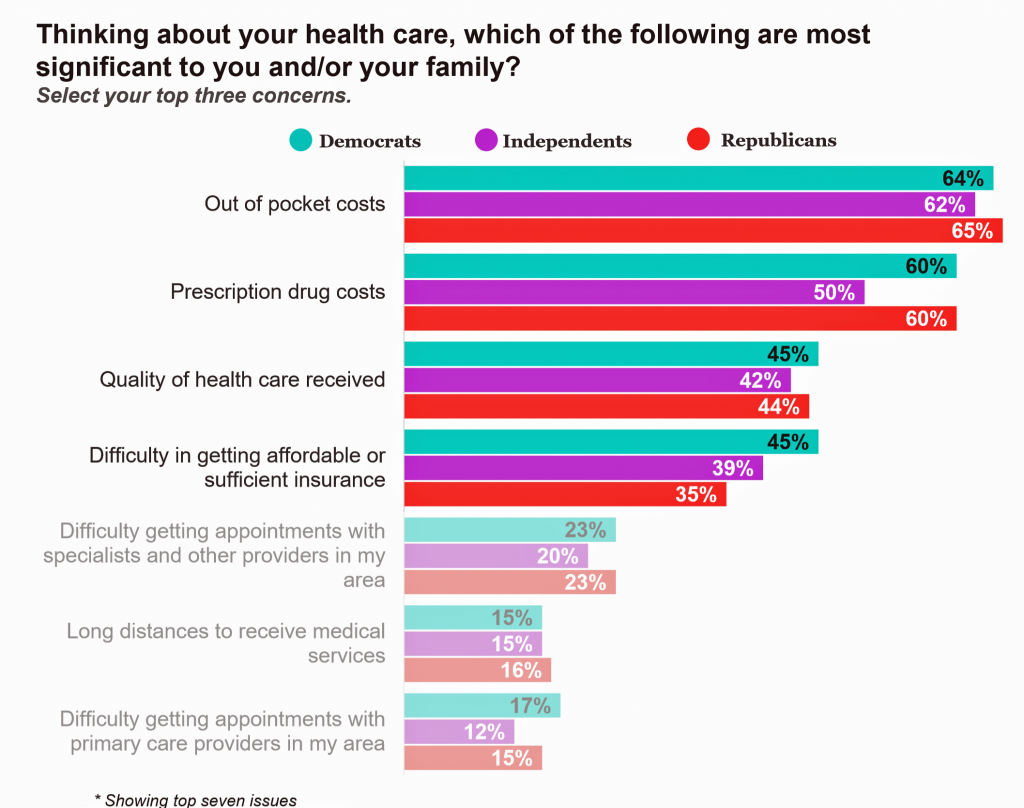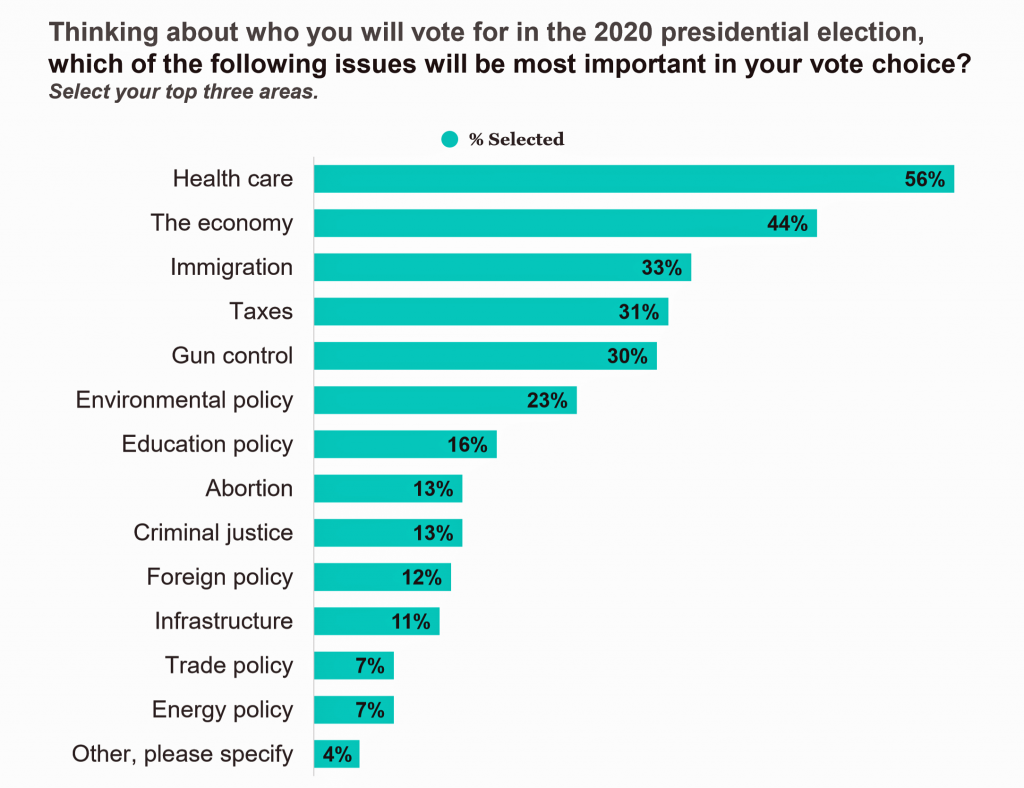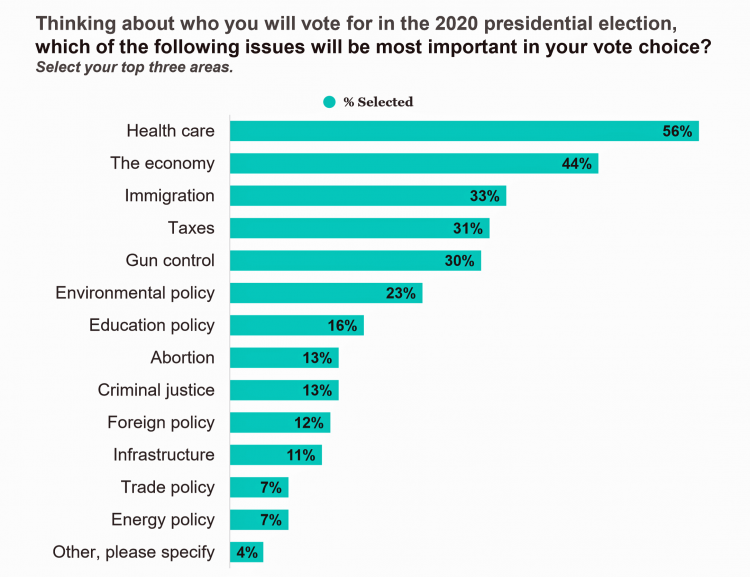
The top two health care concerns facing Americans are out-of-pocket costs and prescriptions drug costs, according to a poll published today in Morning Consult.
Apropos to my title of this post, the survey was sponsored by the Bipartisan Policy Center, whose mission is to promote, cross-party affiliations, “health, security and opportunity for all Americans.”
Health care is the top issue driving voters’ choices in the 2020 elections for most Americans. The economy follows second with 44% of voters, then immigration with 33% of Americans keen on the issue.
 For overall healthcare reform, the plurality of Americans prefer improving the current system (that is, building on the Affordable Care Act) versus repealing and replacing the ACA or adopting a Medicare for All plan.
For overall healthcare reform, the plurality of Americans prefer improving the current system (that is, building on the Affordable Care Act) versus repealing and replacing the ACA or adopting a Medicare for All plan.
Health Populi’s Hot Points: As I write this in the midst of attending the 2020 CES, the world’s annual and largest exhibition of technologies developed for peoples’ everyday lives, we see the growth of tech’s that people can use, wear, connect to for the benefit of their health, fitness, and medical care. There are fewer shiny new things on the show floor, with more tools getting smarter and more clinically sophisticated garnering FDA clearance and, over time, approvals. While not every device has compelling clinical evidence, digital health at CES is definitely moving in the right direction in terms of clinical quality and efficacy in areas of heart monitoring, digital therapeutics, and pain, among other conditions.
That’s the supply side. The BPC/Morning Consult poll tells us that there’s a demand side for dealing with health care costs. This is a very valuable data point for technology developers and others in the health/care ecosystem wanting to engage with consumers, patients, and caregivers.
Check out some of the lower-ranking consumer demand issues that also hold opportunity for tech developers: namely, difficulty in getting appointments with specialists and primary care providers, and long distances to access needed services. Couple these with the public health concerns around mental health treatment and the opioid epidemic, and you can ideate a portfolio of digital health solutions to complement healthcare and a human touch of, say, community health workers close to peoples’ homes, workplaces, and retail touch points.
Digital health tools must address real needs for real people (so solve real problems and pain points), and be designed with those peoples’ needs, values, and sense of value.
This is the Triple Aim for Consumer Health — improve “my” health, enchant and engage “my” experience, and lower “my” costs.
Digital health tools can and will play a role in bolstering these three pillars for consumer health. But tech can’t do this alone: we still seek public policies that bolster social determinants, access to health care services, and a civil society.
For more on this Triple Aim for Consumer Health, check out my book, HealthConsuming: From Health Consumer to Health Citizen, one of CES 2020 Gary’s Book Club featured this week here at the Show.





 Thank you FeedSpot for
Thank you FeedSpot for